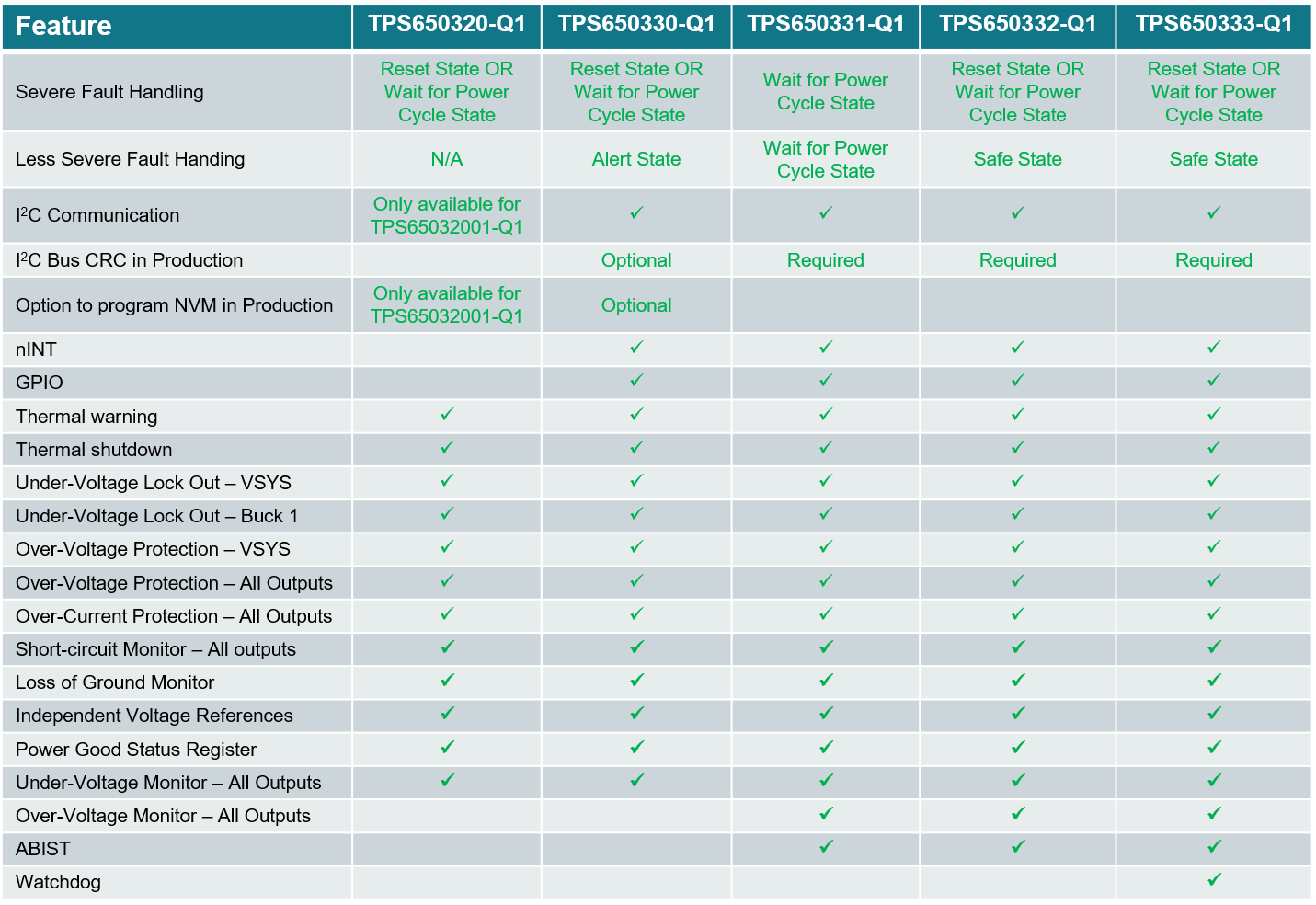-
Camera PMIC Spin Selection Guide SLVAEY0B June 2021 – November 2022 TPS650320-Q1 , TPS650330-Q1 , TPS650331-Q1 , TPS650332-Q1 , TPS650333-Q1
-
Camera PMIC Spin Selection Guide
Camera PMIC Spin Selection Guide
Abstract
There are a wide range of core and emerging vision applications in the automotive industry. Core applications include front, rear, and surround-view cameras. Autonomous driving, mirror replacement, and driver monitoring cameras are some emerging applications as Advanced Driver Assistance Systems (ADAS) become more sophisticated. The automotive image sensor market has several key manufacturers with broad portfolios of sensors to address many of these applications. The portfolios range from low quality (1-2 megapixel image sensors) to high quality (8+ megapixel image sensors) resulting in different supply voltage, current, and power sequencing requirements.
The TPS650320-Q1 and TPS65033x-Q1 family of Power Management Integrated Circuits (PMICs) helps simplify the power design process for these cameras by optimizing solution size and enabling re-usability across many vision applications. The family of PMICs maintains strong performance against varying power requirements across existing and emerging camera applications. Each PMIC is also fully pin-compatible. Without the need for a power circuit redesign, a simple BOM change enables full power design scalability and re-usability from low-end non-functional safety cameras, to high-end functional safety cameras. This guide connects many common automotive image sensors to an appropriate PMIC part number. The part number is a Non-Volatile Memory (NVM) spin with default settings that support the sensor's power requirements.
Trademarks
All trademarks are the property of their respective owners.
1 Camera PMIC Family Overview
TI offers a variety of camera PMICs with three buck converters and one low-noise LDO designed to support many automotive vision applications. These applications include but are not limited to:
- Rear-View
- Surround-View
- Driver Monitoring
- Cabin Monitoring
- Mirror Replacement
- Autonomous Driving
- Remote Front-View
- Digital Video Recorder (DVR)
The following sections provide a brief overview of features and capabilities. Each camera PMIC is equivalent in terms of regulator performance. The differences between variants are related to the device's feature set. This includes fault detection, fault handling flexibility, and the internal state machine. Figure 1-1 summarizes the differences between versions.
 Figure 1-1 Camera PMIC Feature
Comparison
Figure 1-1 Camera PMIC Feature
Comparison1.1 Non-Functional Safety Camera PMICs
These devices are intended for cameras that do not require functional safety. Some examples may include rear-view camera and surround-view camera. The primary difference from the functional-safety variants lie in fault handling capabilities and state machine behavior.
1.1.1 TPS650320-Q1
The TPS650320-Q1 is a low current PMIC with a reduced feature set designed to cover image sensors with up to around 5-megapixel (MP).